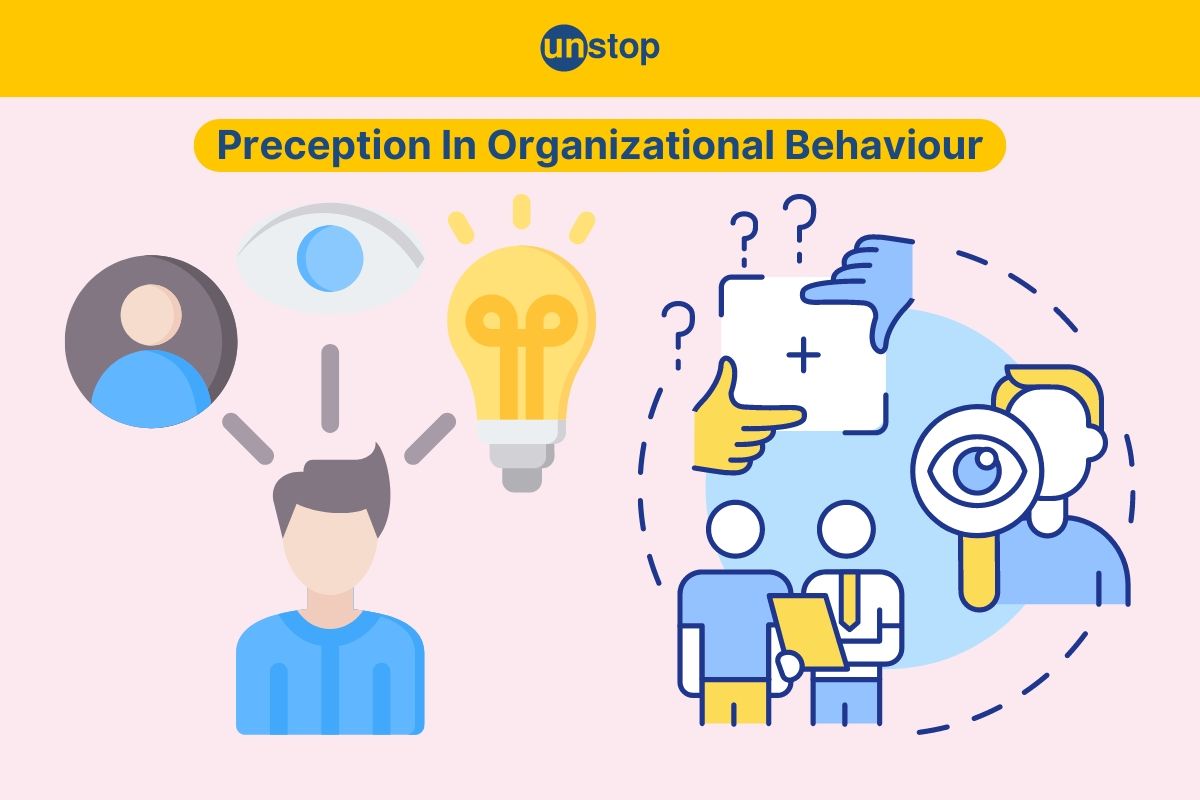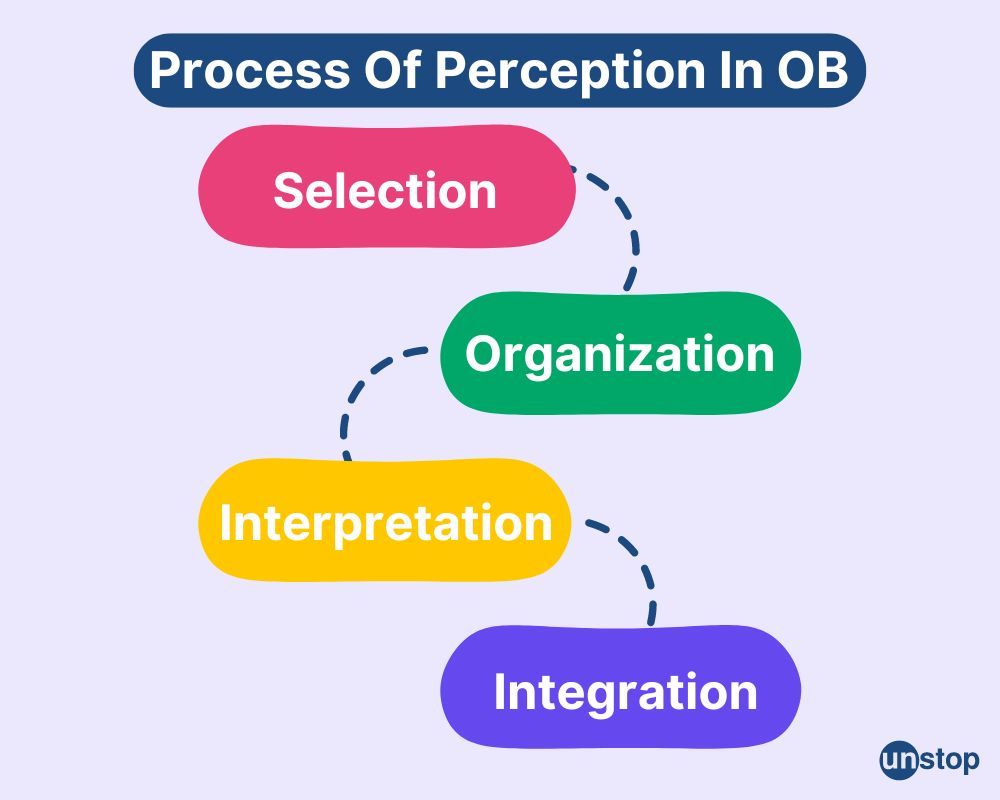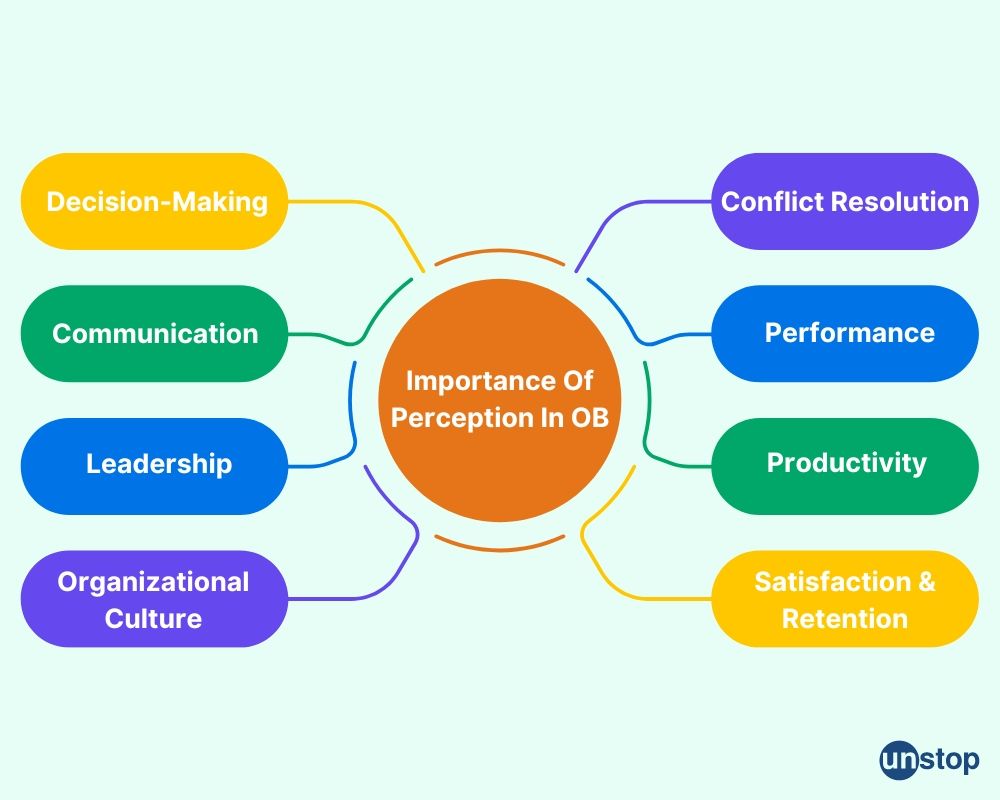- What Is Perception In Organizational Behaviour
- Process Of Perception
- Importance Of Perception In OB
- Factors Of Perception In Organizational Behaviour
- Impact Of Perception On Decision-Making
- Perception On Communication & Culture
- Enhancing Relationships With Perception
- Strategies For Improving Perception
- Conclusion
- Frequently Asked Questions (FAQs)
Perception In Organizational Behaviour- Meaning, Process & Factor

Ever wondered how perception shapes organizational behaviour (OB)? Unravel the impact of perception on decision-making, communication, and team collaboration.
Explore how biases and stereotypes mould our professional interactions, driving success or hindrances within organizations. Discover the key role perception plays in shaping corporate culture and employee relationships.
What Is Perception In Organizational Behaviour
Perception in organizational behaviour refers to the process through which individuals interpret and make sense of their environment, including people, events, and situations within the workplace.
It involves selecting, organizing, and interpreting sensory information to form mental representations or perceptions.
Process Of Perception
Understanding perception in organizational behaviour helps managers and leaders create a more effective and supportive work environment by addressing and mitigating the factors that lead to misperceptions and enhancing those that contribute to accurate perceptions.
The significance of perception in organizational behaviour is underscored by its profound impact on how employees perceive and respond to various organizational dynamics. It is a key determinant of their motivation, job satisfaction, and interaction with others, thereby playing a pivotal role in shaping organizational effectiveness and culture.

Selection
Individuals selectively attend to certain stimuli in their environment while ignoring others based on factors such as relevance, salience, and familiarity. In the workplace, employees may prioritize information related to their job responsibilities, goals, and interests.
Organization
Selected stimuli are organized and categorized into meaningful patterns or schemas based on pre-existing knowledge, experiences, and cultural norms.
For example, employees may categorize colleagues as friendly or competitive based on past interactions and social cues.
Interpretation
Organized stimuli are interpreted or assigned meaning based on individual perceptions, attributions, and cognitive biases. Interpretations may vary depending on factors such as personality, values, beliefs, and situational context.
For instance, an ambiguous performance review may be perceived as constructive feedback by one employee and as criticism by another.
Integration
Finally, perceptions are integrated into cognitive structures or mental representations that guide behaviour and decision-making. Integrated perceptions influence how individuals respond to challenges, conflicts, and opportunities within the organization, shaping their attitudes, motivations, and interpersonal relationships.
Importance Of Perception In OB
Let us study the importance of perception in organizational behaviour for several reasons:

Decision-Making
Perceptions influence decision-making processes by shaping how individuals evaluate risks, opportunities, and alternatives. Biases in perception, such as confirmation bias or stereotyping, can lead to suboptimal decisions and judgment errors.
Communication
Effective communication relies on accurate perception and interpretation of verbal and nonverbal cues. Misinterpretations or misunderstandings stemming from perceptual biases can hinder communication effectiveness and lead to conflicts or breakdowns in teamwork.
Leadership
Perceptions of leaders' behaviour, traits, and effectiveness significantly impact employee attitudes, trust, and commitment. Effective leaders are mindful of how their actions are perceived by employees and strive to cultivate positive perceptions through transparent communication, role modelling, and interpersonal skills.
Organizational Culture
Perceptions shape the collective beliefs, values, and norms that constitute organizational culture. Positive perceptions of organizational fairness, supportiveness, and inclusivity contribute to employee morale, engagement, and retention.
Conflict Resolution
Perceptions play a key role in conflict. Recognizing different perceptions can help in resolving disputes and fostering a harmonious work environment.
Job Satisfaction
Positive perceptions about the work environment, leadership, and team dynamics contribute to higher job satisfaction and employee retention.
Factors Of Perception In Organizational Behaviour
Several factors influence perception in organizational behaviour:
Individual Differences
An individual's perception and understanding of their surroundings are influenced by personal traits like personality, cognitive styles, and cultural background.
For instance, people with a high level of openness tend to be more welcoming of new ideas and different viewpoints.
Social Context
Social factors, including group norms, peer influence, and organizational hierarchies, affect how individuals perceive themselves and others within the workplace.
Group dynamics and social comparison processes can influence perceptions of competence, status, and belongingness.
Work Environment
Organizational factors such as job design, leadership styles, and organizational climate influence employees' perceptions of job satisfaction, autonomy, and organizational commitment.
Positive work environments characterized by supportive leadership and fair practices foster positive perceptions among employees.
Perceptual Biases
Cognitive biases, such as the halo effect, stereotyping, and attribution errors, distort individuals' perceptions and judgments. Awareness of these biases is essential for mitigating their impact on decision-making, performance evaluation, and interpersonal relationships.
Impact Of Perception On Decision-Making
Let us study the impact of perception in organizational behaviour on decision-making:
Cognitive Complexity
Cognitive complexity plays a crucial role in how individuals perceive and interpret information in organizational settings. It involves the ability to consider multiple perspectives, leading to more informed decision-making processes.
Biases Recognition
Recognizing biases in perception is essential for ensuring that decisions are not influenced by subjective factors. By acknowledging and addressing biases, organizations can make more objective and effective decisions.
External Factors
External factors, such as the situation and response disposition, can significantly impact how perceptions shape decision-making outcomes. Understanding these influences is key to making well-informed decisions.
Perception On Communication & Culture
Let us study the influence of perception in organizational behaviour on communication and culture:
Nonverbal Communication
Nonverbal signals are crucial in organizational behaviour, influencing how people understand and react to messages. Actions like body movements, facial cues, and hand gestures often speak louder than words.
External Influences
External influences, such as organizational structure and leadership styles, impact how communication flows within a company.
Hierarchical structures may hinder open communication, while flat organizations promote transparency.
Impact On Organizational Culture
Perception influences the development of organizational culture by shaping shared values, norms, and beliefs among employees. Positive perceptions foster a healthy work environment conducive to collaboration and innovation.
Enhancing Relationships With Perception
Let us also study how relationships can be enhanced through perception in organizational behaviour:
Social Perception
Perceptions play a crucial role in shaping relationships within organizations. Social perception involves how individuals form impressions of others based on various cues such as appearance, familiarity, and personal characteristics.
Interpersonal Relationships
Enhancing perception can lead to stronger bonds among colleagues and teams. By practising empathy and understanding, individuals can navigate conflicts better and build trust through effective communication.
Selective Attention
Selective attention influences how individuals perceive their surroundings, focusing on certain aspects while ignoring others. This aspect can impact how people interpret behaviours and interact with each other.
Shared Perceptions
Perception plays a vital role in shaping teamwork dynamics within organizations. When team members have a positive perception of each other's work and capabilities, it fosters trust and cooperation.
This shared perception leads to improved communication and collaboration among team members.
Strategies For Improving Perception
Let us look at some of the recommended strategies for improving perception in organizational behaviour:
Enhancing Individual Perception
Individuals can enhance their personal perception by actively soliciting feedback to comprehend how they are perceived by others. Reflecting on oneself and being receptive to constructive criticism aids in pinpointing areas of improvement.
Promoting Positive Perception
Organizations can foster positive perceptions by promoting transparency and open communication channels. Encouraging diversity and inclusion initiatives can also enhance employees' perceptions of fairness and equality within the workplace.
Enhancing perception skills leads to increased empathy, better conflict resolution, and improved teamwork. This, in turn, boosts overall organizational productivity and employee satisfaction levels.
Conclusion
Perception plays a key role in organizational behaviour by influencing how people understand and react to the situations they encounter at work. Understanding the perception process, its importance, and the factors influencing perception is essential for promoting effective communication, decision-making, leadership, and organizational culture within the workplace.
By fostering awareness of perceptual biases and promoting a culture of openness, empathy, and inclusivity, organizations can enhance employee satisfaction, collaboration, and overall performance.
Frequently Asked Questions (FAQs)
1. What is the significance of exploring perception in organizations?
Understanding perception in organizations helps in deciphering how individuals interpret information, make decisions, and interact with others, leading to improved communication, decision-making, and overall organizational effectiveness.
2. How does perception influence communication and culture within an organization?
Perception shapes how individuals interpret messages, leading to varied understandings. This impacts organizational culture by influencing norms, values, and interactions among employees, ultimately affecting teamwork and productivity.
3. How can enhancing relationships through perception benefit an organization?
By improving understanding and empathy among team members, enhanced relationships foster trust, collaboration, and a positive work environment. This leads to increased morale, productivity, and overall organizational success.
4. Provide some of the strategies that can be can be implemented to improve perception in an organizational setting.
Improving how people see things in a company can be done by listening well, giving feedback, keeping communication open, supporting diversity, and offering training on recognizing biases. These actions can boost perception at work, leading to smarter choices and stronger teamwork.
5. How does perception impact teamwork effectiveness in organizations?
Perception influences how team members perceive each other's contributions, behaviours, and intentions. Understanding these perceptions allows teams to communicate effectively, resolve conflicts efficiently, and collaborate cohesively towards achieving common goals.
Suggested reads:
- Personality In Organizational Behaviour- Types, Theories And More
- Theory Of Personality- Definition And 6 Major Theories Explained
- Severance Pay | Meaning, Importance, Components And Eligibility
- Job Profile | Meaning, Purpose, Component & Benefit (5 Best Tips)
- Understanding Workplace Bias: 10+ Common Types And Ways To Address Them
Instinctively, I fall for nature, music, humor, reading, writing, listening, traveling, observing, learning, unlearning, friendship, exercise, etc., all these from the cradle to the grave- that's ME! It's my irrefutable belief in the uniqueness of all. I'll vehemently defend your right to be your best while I expect the same from you!
Login to continue reading
And access exclusive content, personalized recommendations, and career-boosting opportunities.
Subscribe
to our newsletter
















Comments
Add comment